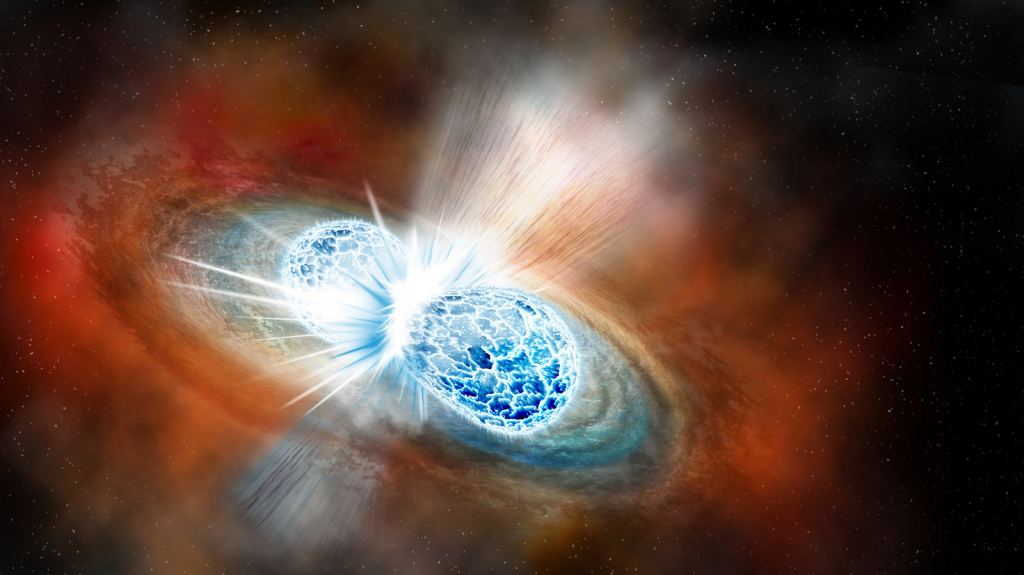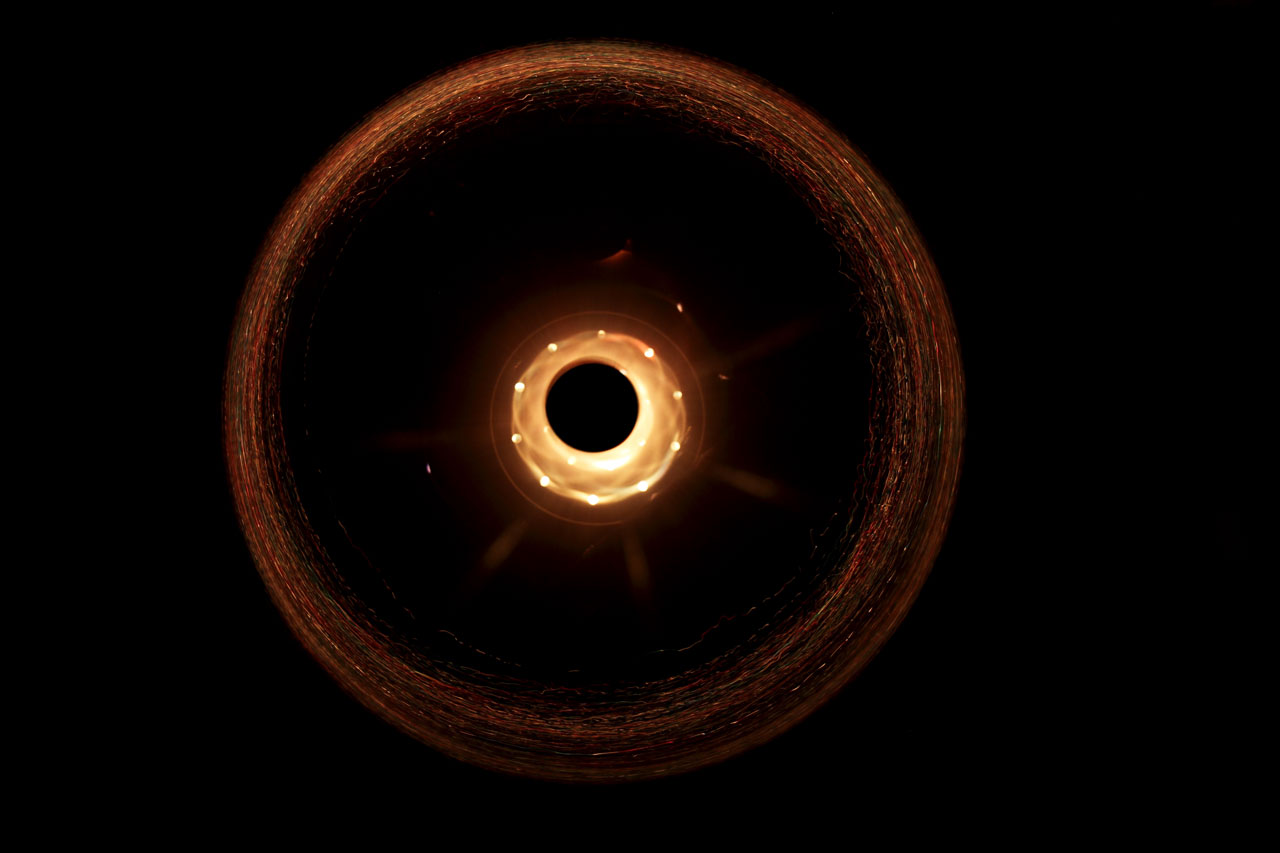Imagine you are a neutron star. You’re happily floating in space, too old to fuse nuclei in your core anymore, but the quantum pressure of your neutrons and quarks easily keeps you from collapsing under your own weight. You look forward to a long stellar retirement of gradually cooling down. Then one day you are struck by a tiny black hole. This black hole only has the mass of an asteroid, but it causes you to become unstable. Gravity crushes you as the black hole consumes you from the inside out. Before you know it, you’ve become a black hole.
According to new research published in Physical Review Letters, this scenario might happen from time to time, and it could explain dark matter and the smallest black hole we’ve observed.
Neutron stars typically have a mass between 1.5 and 2 solar masses. They form because the quantum pressure of neutrons is strong enough to counter the gravitational weight of the star. But there is a limit to how much mass a neutron star can have. It’s known as the Tolman-Oppenheimer-Volkoff (TOV) limit. This limit is hard to calculate, but we think it is around 2.5 solar masses. Anything above the TOV limit should collapse into a black hole.

The largest neutron star we’ve observed is about 2.24 solar masses. The smallest black hole we’ve observed is about 2.6 solar masses. On the one hand, this seems to confirm that 2.5 solar masses is a pretty good estimate of the TOV limit. On the other hand, this raises an interesting question about how such a small black hole could have formed.
Many stellar-mass black holes form when a large star explodes as a supernova. Its core is compressed and gravitationally collapses. Based on our understanding of large stars, the smallest stellar-mass black holes should be around 4 solar masses. Black holes could also form when two neutron stars collide, or perhaps the collision of a white dwarf and neutron star, but these should also produce black holes that are at least 3 solar masses.

So how does a black hole of only 2.6 solar masses form? While a merger can create small black holes, this new study looks at an alternative. The idea involves primordial black holes. These hypothetical black holes might have formed in the early universe, and could have a mass smaller than Earth. If primordial black holes exist, then they could collide with a neutron star, causing it to collapse into a solar-mass black hole.
While the idea has been proposed before, in this study the team looks at how this might connect to dark matter. Some astronomers have proposed that dark matter could be made of primordial black holes. If that’s true, the cosmos must be filled with primordial black holes, and collisions with neutron stars should be common. So the team looked at the mass distribution of known neutron stars and calculated the most likely size of solar mass black holes. It turns out to be between 1 and 2.5 solar masses. So the smallest black hole we’ve observed might have been formed through a primordial black hole collision.
This is an interesting idea, but current evidence is hardly compelling. Still, as LIGO and Virgo observe more black hole collisions, they might observe many more small black holes. If they do, we might have to look at this idea of dark matter more closely.
Reference: Takhistov, Volodymyr, George M. Fuller, and Alexander Kusenko. “Test for the Origin of Solar Mass Black Holes.” Physical Review Letters 126.7 (2021): 071101.

